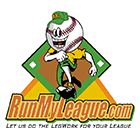
Section 17.1 The Rationale
Like it or not, in the current era of youth travel sports, with the proliferation of multiple leagues serving the same population under multiple sanctioning bodies (none of which has any jurisdictional authority over the others or the power to regulate player movement between or among leagues), players often have their choice of leagues in which to participate. Widespread competition for players is a fact of life; to pretend it is otherwise is not realistic.
Notwithstanding this inter-league competition for players, there is a common belief that individual amateur youth leagues should regulate the competition for players among its own members for the benefit of those members. While it is easy to understand the general benefit of imposing at least some intra-league restrictions on player movement, It would be self-defeating to erect overly restrictive barriers to player movement inside our own League. It is far better that players unhappy with their circumstance in our League be afforded an opportunity to stay in this League and play for a different team, than to emigrate to another League. ENYTB is itself a perfect illustration of this dynamic. The existence of our League is a direct result of other local leagues having enacted overly restrictive policies on player movement and new members. If history teaches us anything it should be that we don�t want to be any more restrictive than is absolutely necessary, else we become the next endangered species.
Some might even ask why restrict player movement at all. To answer that question we need only imagine what a �survival of the fittest� youth sports world might look like. The talent level among teams would assuredly become significantly more skewed, resulting in haves and have nots, and little in between. While this model would produce a handful of super teams, and perhaps benefit the very best players, many �star� players would be on the bench instead of playing, the quality of the typical team would surely decline as would the overall number of teams and, hence, players. Competition among teams for the top players would be never-ending and ruthless. Coaches would spend more time recruiting and less coaching. It also can easily be imagined that much of the fun would be taken out of the game.
Neither extreme of player movement would seem to produce an appealing outcome. Indeed, experience suggests that a limited degree of player movement is sufficient to realize the bulk of the potential benefits to players without causing any of the harmful side effects to League members or the League as a whole that unrestricted movement would likely portend. Therefore, it is not a question of whether there should or should not be player movement but how much is enough.
The League establishes significant restrictions in regards to the overall level of player movement as the amount of player movement between any two teams, as provided in Article XVI. The effect of these restrictions is lessened somewhat by specific exemptions, also provided in Article XVI. The various sanctioning bodies that ENYTB affiliates with recognize the desirability of additional player movement by providing for releases, whereby members may voluntarily relinquish their league rights to a certain player. We believe the new ENYTB system is vastly superior to release systems that include a ban on tampering that is impossible to properly enforce.
Effective 2013, ENYTB adopted a team CAP SYSTEM applied to RFA only. This system balances the need for roster stability with the need for player movement w/o relying on releases or by imposing a ban on tampering. This system, as described in Article XVI, legalizes tampering! Players are allowed to move from team to team as they wish, provided that their new team has sufficient cap space to add them to their rosters. The limits are placed on the teams, not the players. No releases are required. Tampering is no longer an issue. Teams are free to talk to players, try-them out in a private work-out, whatever. To help teams maintain full and happy rosters, ENYTB maintains various customized tables of all Unrestricted Free Agents (UFA) (inactive former ENYTB players) as well as RFA (currently active ENYTB players) on the website (See My Team > Unrestricted Free Agents). Most ENYTB players are minors so we do not make their contact info available on the website. However, contact info for UFA or RFA is provided to ENYTB members via email. Simply email the League Administrator three player names at a time. Also provide your name, team name and age on the request.